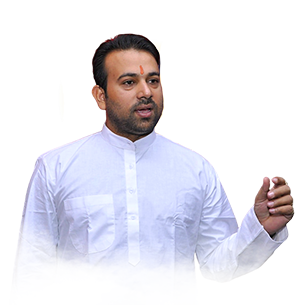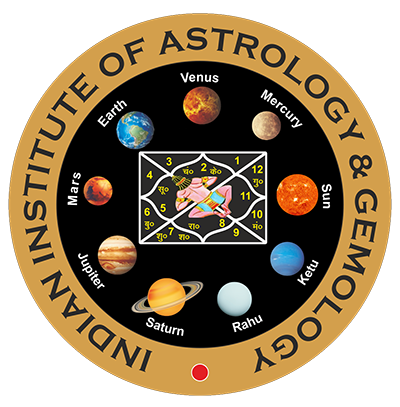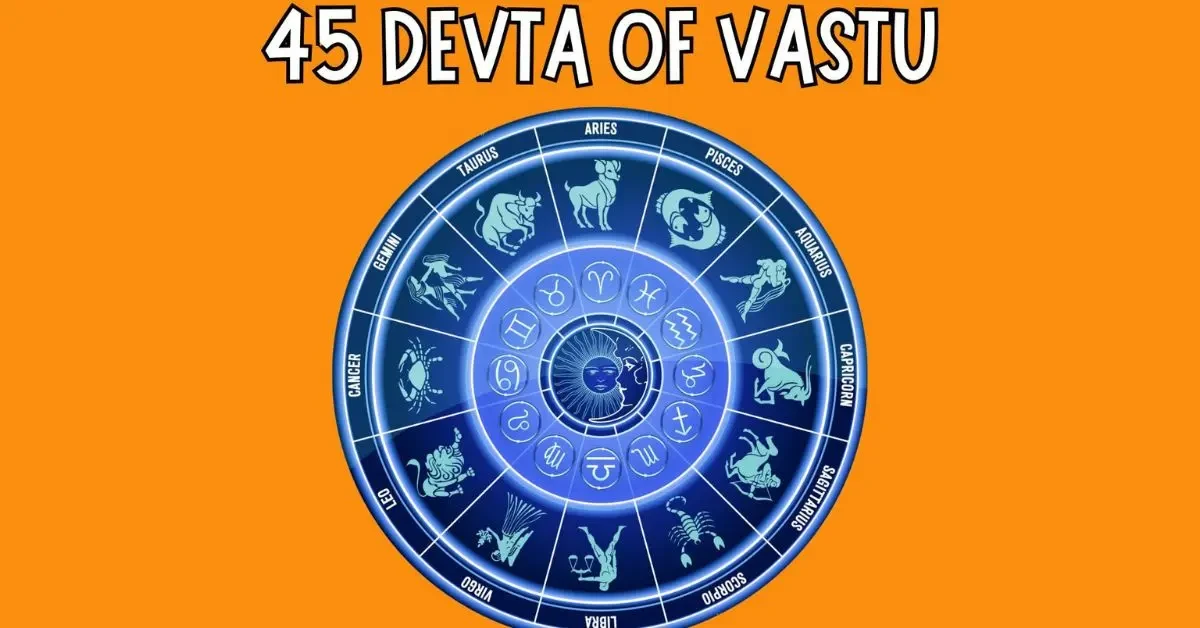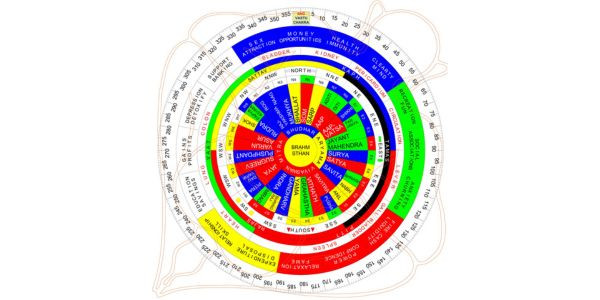




20648 Views | October 30, 2024
Have you ever wondered how ancient Vastu Shastra assigns divine powers to every direction of your home or workplace? The Vastu Devta, guardians of the cosmos, hold the key to balancing energies, attracting prosperity, and eliminating negativity from your surroundings. From Agni to Varuna, each Devta governs a unique aspect of life.
Dive into the mystical world of these divine forces and discover how aligning with them can transform your space into a haven of peace, success, and happiness. Ready to explore the hidden science of Vastu Devtas? Let's begin the journey!

The word Shikhi denotes Shikhar, which means fire or peacock. Shikhi has qualities similar to Agni. He got possession of the post of the 'head' part of Vastu Purush through Brahma Ji. Vastu Purush is very energetic and fiery in nature, and he holds a place as the head of the Vastu Purush. As one of the Vastu Devta, all the sons of Anal possess the same qualities as Agni, and in some places, Anal is considered to be the incarnation of Agnidev.
Parjanya is considered a rain cloud. He is also considered the founder of clouds. He got the right of right eye position of Vastu Purush in the Vastu Chakra. On walking towards the east from the northeast, there is the post of a deity named Parjanya. They have also been counted among the twelfth Adityas. Parjanya has also found a place among the 33 deities mentioned in the Vedas. In the Vastu Chakra, Parjanya is pointed towards the east and is known for promoting female progeny or enhancing the qualities of women.
Jayant is the son of Indra. And the daughter of Daityaraj Puloma, Shachi is his mother. In this way, the demonic rites can also be considered in Jayanta. They have the right on the post located on the right ear of Vastu Purush. If there is a door in place of Jayant, then there are possibilities of Vipul Lakshmi. Due to this, both fame and wealth are obtained because Jayant's prestige is in the place near Indra. Therefore it is believed that the people who possess the Lakshmi bestowed by Jayant may also be Rajpurushas or have close relations with Rajpurushas.
He is the eldest of the twelfth Adityas, the eldest son of Deva Mata Aditi. In worship texts, they are called by the name 'Kulishayudha'. Kulishayudh means - Kulish is one whose weapons. Kulish means thunderbolt and only Indra wears the thunderbolt. According to the Rigveda, three special qualities of Indra have been said - the power to do great things, Atul might, and winning the demons in battle. Indra is said to be the lord of all kinds of wealth.
Sun is the eye of all the deities. These were created by Adityas - Mitra - Varuna, Aryama, etc. The first power of the twelfth Adityas was accepted by the Sun. Pusha is his message carrier. In the Vastu Chakra, right on the eastern horizon, the Sun God has a prominent position (somewhere there is a description of two posts). There is evidence of making Shri Griha (the main meeting place through which all the splendor of the housekeeper is revealed) on this part of the Vastu Purush, which is also associated with Vastu Devta.
Satyadev is the embodiment of the real Dharma, who inspires and gives firmness to the vows and resolutions. The word 'Satya' is also used in the meaning of 'Rita', this deity named Satya has a place near the sun. In fact, the Vasu named 'Pratyusha' has been accepted by the name of Satya. The word Pratyush means 'effect' or sunrise. Morning is considered auspicious.
The name Bhrish is a sign of excessive, frequent, or excessive expansion. In the preceding verse, Vasu (Gana) named 'Pratyusha' has got the prestige as Prabhat by the name of Satya, hence this verse is considered to be the place of a deity named 'Ushas'. She is the goddess of beauty. With their rise, every nook and corner of the sky lit up and is filled with an abundance of joy. Usha has a special relationship with worldly works. The place of Usha Devi near the Sun is also clear from this verse. Therefore, Bhrish is actually the god of dawn.
Anil is actually the name of Vayu Dev (Pawan, Vata, Sameer). He has prestige in the past position in the right angle of the Vastu Chakra and on the right-hand pedestal of Vastudev. Both the words Vata and Vayu are derived from the root 'Va', which means to move or carry the smell. This post is suitable for Anhihotra or Yagya's works because Vasudeva gives quick access to this part through Agnidev. Sampoorna Bhuvan means that which is the seed form of the living beings or the Panchamahabhutas or the one who holds them in the womb. (All are moved by the wind.) This divine power-rich wind god moves as he pleases. In the worship texts, he has the prestige only as Vayudev.
Pusha Dev is one of the twelfth Adityas. He was born to Dev Mata Aditi, wife of Rishi Kashyap. He is the lord of animals and mounts on goats. Their position is in the direction of the south direction from the right angle of the Vastu Chakra. They get the Yagya portion and have the right to grant boons. Rice powder is offered to them in the Yagya. Pusha is considered a symbol of weak mentality in the Vastu Chakra because when it is corrupted, deception and ego are born in the person.
The word with is used in the sense of a lie. These are gods wearing disguises. His prestige is on the post located on the lower part of the right armpit of Vastu Purush.
Grihakshat deity is actually 'Vishvedev'. These are prestige as a group. Keeps the house intact and protects it from breakage. Vishvedev is the Gana of the Gods and is called Devgan. If these gods are pleased, then they keep the house intact for the people living in the house and when they are angry, they divide the family or building.
Yama is the son of the deity Lord Vivasvan (Sun). He is repeatedly called Vaivasvat after his father's name. She is the god of life and shows the path to the dead soul. Yama has a special relationship with fire because it is the god of fire that takes the dead souls to Yama. Yama is also related to the ancestors and they rule over the spirits.
In the texts, this word was used in the sense of 'Bhangra' (intoxicating vegetable). The name Bhringraj also means Bhairon and Bhringraj mean 'King of the brows'. The Gandharvas and Apsaras have got the same or adjacent prestige in almost most of the mandalas. Bhramar is related to Kama and Apsaras have been the medium of expression of Kama since time immemorial. In the Vastu Chakra, he has prestige on the left thigh post of Vastu Purush and from this place also the Gandharva Vidyas are accomplished.
The meaning of Mrig is generally taken from deer. But in astrological texts, the meaning of deer is considered to be from the moon of the month of Margashira, Mrigashira Nakshatra, and Mrigashira Nakshatra. The relation of deer in the Vastu Chakra is more favorable to be taken from the month of Margashish because in this cycle the establishment of the Twelve Adityas. In the Puranas, the power of the twelve months of the year has been described to the Dwadash Adityas. The different levels of the tenacity of the Sun God have been considered as the Dwadash Adityas. In the Vastu Chakra, these positions are located on the right sitting (hip) of the Vastu Purush.
The word Dauwarik is used in the sense of Kshetrapal, gatekeeper, or watchman. In Sanskrit and Hindi dictionaries, the meaning of this word is given as gatekeeper. The Samarangan Sutradhar has considered 'Dauwarik' as the lord of Nandi or the first ganas. The meaning of Nandi is – Nandi is the one who pleases by singing praises through his voice. Nandanti Devata Yasya - Nandi sa Prakirita means the one whose praises please the deities, that is Nandi. Nandi is the main gana of Lord Shankar and is also the gatekeeper. In Vastuchakra, this post is located on the left sitting (hip) of Vastu Purush.
The literal meaning of Sugriva is - good-necked, hero, swan, a kind of scripture but in Vastu Chakra we consider Sugriva to be related to Lord Hayagreeva or Hayashirsha (Horse-headed) Maharishi Dadhyangtharvan and Ashwini Kumars. In this position, Maharishi Dadhyangtharvan is revered in the form of Guru and Ashwini Kumar as a student. One of the main reasons for believing this is that the masters of Vastu Vidya have given instructions to build Vidyabhyas Mandir on this post in the Shodash Room Vidhan. This place between West and Northeast is very important for study.
Pushpadanta is a Gana of Lord Shankar and belongs to the Gandharva caste. He is a knower of invisible knowledge and pleases Lord Shankar with his praises. Pushpadanta is a strong announcer of known learning.
Varuna is considered to be the god of water. They keep an account of sin-virtue and truth-false in the public and the secular side of this system is still alive today. Even today, when a person makes a vow or a vow, he takes water in his hand and takes a vow in the company of Varuna Devta. In the Vastu Chakra, Varun got a place in the far west direction on the left thigh post of Vastu Purush. In many places in the Vedic hymns, Varun has also received an analysis of the name 'Asura'. Asura means 'the giver of life' i.e. Varuna is the one who transmits the life force to the living beings.
Asuras are gods, but over a period of time, this name was used for the demons of tamasic nature. He was a seeker of illusory powers. Asuras are said to be extremely harsh and selfish towards human sensibilities. Although they have been endowed with the same power as the gods, a lack of generosity was seen in them. He was never behind the gods in doing penance and research. Hiranyakashipu-Hiranyaksha, Madhu-Kaitabha, Vritrasura, Ravana-Kumbhakarna-Ahiravan, Kansa-Jarasandha-Banasur, etc., were all called asuras because they had demonic tendencies in abundance.
The word Papayakshma mainly consists of two words. Sin and Tuberculosis are the names of a type of disease that makes the lungs inactive gradually and bad deeds are called sins. The diseases or consequences which appear due to continuous inauspicious deeds of a person are called 'Papayakshma'. Tuberculosis itself is called Papayakshma. In the Vastu Chakra, this pada is located on the wrist of the left hand of Vastu Purush, near the west angle.
The five sons of death have the disease, old age, grief, craving, and anger. The disease is the disease, which has been given a place at the west angle of Vastu Chakra. It is the most dreadful deity who gives death and bondage and whose violation is to invite death.
Nag was the brother of Adityas, so they are also considered among the gods. Their abode is considered to be Hades. From Kadru there were serpents like Shesha, Anant, Vasuki, Takshak, Kulit, etc. This description is found in Adiparva of Mahabharata. The bed of Lord Vishnu is made of Nagraj Anant. Nag Yoni is the god Yoni and the serpents also have the same powers as the deities.
Samarangan Sutradhar has considered the main deity to be the form of Tvashtha or 'Vishvakarma'. In the Vastu Chakra, there is a reputation of 'Tattva' on the elbow of the left hand of Vastu Purush near the north direction. Tvashtha is counted among the Dwadash Adityas and is believed to be born from Devmata Aditi, the wife of Kashyapa. The founder of Vastu Karma is also Vishwakarma himself and his sons were skilled in the architectural period, which later got divided into goldsmiths, blacksmiths, carpenters, etc.
Among the Ashtavasus, a Vasu named Prabhas, who is the father of Vishwakarma, has a place near Vishwakarma in the Vastu Chakra. Samarangan Sutradhar has considered Bhallat to be the moon. Having a door at this place allows the entry of abundant wealth into the house.
The word 'serpent' has been mentioned more often in Rigveda. The main difference between serpents and serpents is that snakes have only one face whereas serpents have many faces. In the Vastu Chakra, the snake has got a reputation for being situated on the left shoulder of Vastu Purush, near the north direction (to the north).
This door named Aditi proves to be especially harmful to women. Apart from this, this gate also causes intercaste marriage. It increases savings.
One of the 13 wives of Kashyapa is believed to be the origin of demons from Diti. Devas were born from Aditi and demons from Diti. Divinity is also hidden in the demonic qualities of Diti and she is extremely sattvic. But the demon spirit in his sons kept on becoming stronger with the passage of time. The place of both of them comes in the middle of North direction and Northeast angle in Vastu Chakra.
A deity named Aap is situated at the angle going from the center of Brahma to the northeast. You are a collective and they are considered to be mothers, young women, givers of boons, and goddesses who attend the yagya. Somewhere the water located in the earth is also equated to you, so there is a close relationship between the groundwater and you.
Aapvatsa has been equated with a river, Tadag, or any other source in the form of water coming out of the water sources. Be aware that the angle that goes from the Indra place of Brahma to the northeast, the position of you and the Aapvats has been told on that angle.
Savita is one of the Dwadash Adityas and is one of the most powerful energy fields of modern times. The best synthesis of the unspent karmas of past lives comes from this region, so it becomes an important part of the Vastu Chakra. Yasak has said that the period of Savita comes after the cessation of darkness, but Sayanacharya has said that the Sun before rising is called Savita and from rising to setting it is called Surya.
Usually, the verses named Indra-Jaya are situated at an angle going from the center point of Brahma to the southeast angle. In the tradition of Samarangana Sutradhar, situated at the southerly angle on Karna, after Pitra comes Indra, after Indra, Jai, and after Jai comes Brahma. In my whole life's Vastu experience, I have found that 6 verses of Vivasvan and 2 verses of Indra and Jai give the most successful accomplishments of Vastu.
Usually, the verses named Indra-Jaya are situated at an angle going from the center point of Brahma to the southeast angle. In the tradition of Samarangana Sutradhar, situated at the southerly angle on Karna, after Pitra comes Indra, after Indra, Jai, and after Jai comes Brahma. In my whole life's Vastu experience, I have found that 6 verses of Vivasvan and 2 verses of Indra and Jai give the most successful accomplishments of Vastu.
The position of Rudra on the axis of the Vaastu angle from the center of Brahma of the Vastu Chakra. The general public knows Rudra as Lord Shiva. Intellectuals talk about the eleventh Rudra. The names of Lord Shiva include Rudra, Mahadev, Shankar, Shambhu, Bhava, Sharva, Ugra, etc., and these names are found many times in the Vedas also. Rudra is of special importance among the Gana deities.
Aryama is the lord of the ancestors and he himself is the eternal ancestor. Satisfying them during Shradh Paksha is considered as the satisfaction of all the ancestors. They protect the lineage tradition and their happiness increases the total. They are also the masters of friendship and being pleased with them leads to the attainment of sattvik friendship. Along with Mitra and Varuna in the Yagya, they receive the sacrifice from Swaha and accept the sacrifice of Swadha in the Shradh. By being Kashyap and being Aditi's son, he receives a share of sacrifice. In the Vastu section, due to inauspicious construction on their part, accidents increase.
Vivasvan Devta is the image of the medieval sun god. He is one of the Dwadash Adityas and the father of Yamraj. In the south direction, in the Vastu Chakra, he has a prominent place in the Shatpadiya deity. For the attainment of kingdom and opulence, the traditions of making a main hall or building on this post have been told by Vastu Acharyas.
Mitra is counted among the Dwadash Adityas and he is also the son of Devmata Aditi, wife of Kashyapa. They are the regulators of friendship. Like the milk-water relationship, they have a close friendship with Varuna. Mitra is the god of the day and Varuna of the night. He is regarded as a kind force of nature. In the Vastu Chakra, Varuna is in the west direction, and Mitra Dev, near him, has got 6 verses (somewhere three verses are also mentioned). They have control over the left part of the stomach of Vastu Purush.
Prithvidhar Devta is the form of Sheshnag. He is considered one of the Ashtavasus in the Vastu Chakra. Daksha Prajapati's daughter named Vasu, who was the wife of Dharma, was born to a Vasu named Dhara. Along with all the Vasus, he has also got the prestige of Prithvidhar.